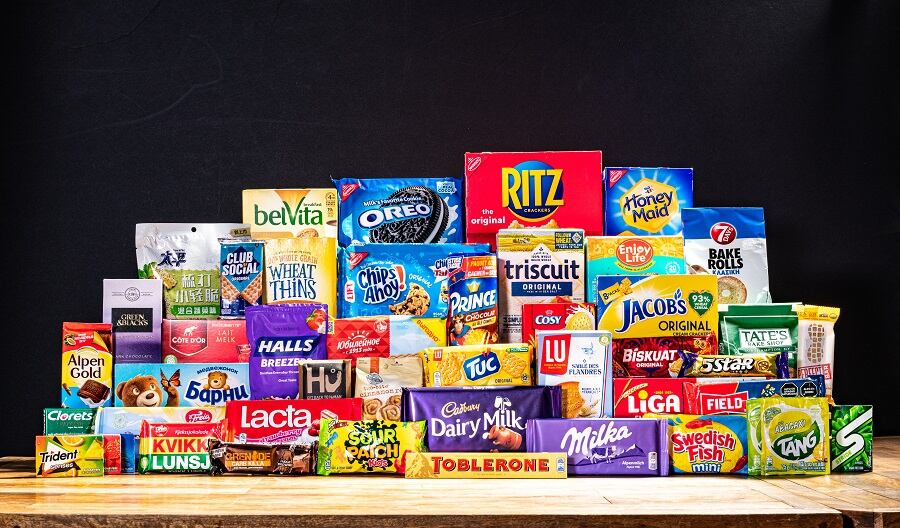Developed in partnership with The Harris Poll, the State of Snacking report surveyed thousands of consumers across 12 countries, including the US, to understand how they are purchasing snack foods and how larger trends are impacting the category, Nick Graham, global head of insights & analytics at Mondelēz International, told FoodNavigator-USA.
Snacks become a budget priority
Though economic concerns are top of mind for many consumers, the snack category remains strong, as snacking “plays a really necessary role in people's lives,” Graham said.
While the report found 89% of consumers are concerned about the impact of inflation, they aren't necessarily shifting their snack budget to other categories. In fact, 78% of consumers say, “I always find room in my budget for snacks,” noting that the prices of meal foods are impacting their pocketbooks more than snack foods.
Consumers purchase snacks for several reasons, but overwhelmingly, they look to snacks for enjoyment. The report found 78% of consumers buy snacks to reward themselves and 77% because it provides a sense of comfort. These statistics are higher among younger generations, with 85% of millennials citing these reasons.
“In a time of anxiety and uncertainty, something that's very familiar or comforting, and yet relatively affordable from a sort of total-absolute perspective, can be a really great way to still feel like you have this moment of pleasure and enjoyment in a world that feels really difficult to manage," Graham said.
Snacks are the new breakfast
But comfort and enjoyment aren’t the only things influencing the space, as snacking is increasingly replacing meals, especially breakfast, Graham explained. Morning snack consumption — the time between 6:00-10:00 am — has grown 42% since 2013, and 40% of consumers said they've "skipped at least one main meal yesterday" in 2021, up from 30% in 2013, according to the report.
Additionally, consumer behaviors developed during and after the pandemic are influencing the snack space, Graham noted. While convenience is driving the need for a quick on-the-go snack, mealtimes are becoming more fragmented, creating more demand for snack foods, he added. However, consumers aren't necessarily snacking alone.
“We've seen across all of the markets this expansion of connected snacking occasions, so people getting together to snack sometimes to sort of makeup for those mealtime occasions.”
4 trends driving healthy snacks
When it comes to healthy snacking, Graham noted that health- and wellness-conscious consumers aren’t a monolith and that they look to this segment for different reasons, often trying to find claims that resonate with their perception of healthy. In line with that, the survey found that 84% of consumers said that "snacks should meet different nutritional needs for different consumers.”
To make sense of these different consumer dynamics, Graham pointed to four key trends that came out of the report, including:
- Reframing indulgences: Some consumers want to indulge in snacks, but also "want it to feel a bit more permissible," Graham said. They might not be giving up an item altogether, instead looking for smaller options. Mondelez's Oreo Thins and products in mini-pack formats are an example of this, he added. Additionally, Graham noted that many consumers also see snacking as an aspect of self-care and improving their mental health, so snacking is overall more favorably today.
- The less-of trend: Many health-conscious consumers are also looking for products with “less-of” claims like less sugar, no gluten, or dairy-free, Graham said. While some consumers crave these less-of products, he admitted that they can be "quite polarizing for people... you either find people who absolutely want that or really don't want that at all."
- Natural ingredients: A big part of health and wellness for many consumers also come down to the ingredients, and many still look for natural and organic ingredients when they buy snacks.
- Functional nutrition: Many consumers are also looking for functional claims when they purchase snack items, which can include added fiber, proteins, vitamins, or minerals.
"People will ask me what's the answer for health and wellness, and the answer is all of those things because you've got different people, wanting different things, at different moments. So, we need to have the right solution to meet people's needs."
Sustainability isn’t a one-size-fits-all
Consumers often have a different definition of sustainability, Graham explained.
"What we've seen is from both a well-being perspective and a sustainability perspective is that it really depends on what your attitude is to food and beverage. For some people, natural is the most important thing ... If there's trash in my community, then packaging sustainability is even more important."
Though the priority on sustainability dropped during the pandemic, it has reemerged on the priority list of consumers, as “the climate crisis really becomes much more top of mind for people,” Graham said. Moving forward, consumer concerns around sustainability will not only influence how CPG companies package their goods but also take a more holistic approach, which will include supply chain transparency, he added.
"What we see particularly with the next generation, so with Gen Z in particular, it's also this emerging focus on the transparency of the supply chain — so where ingredients are coming from, are they sourced sustainably, [and] are they sourced ethically. Certainly, that's part of the reason we've elevated sustainability as an equal pillar in our growth strategy because we recognize that for consumers, it's going to become more holistic than just about packaging."



